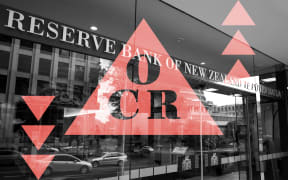
Photo: 123RF
There is little relief for New Zealanders struggling to make ends meet, with high petrol prices continuing to lift inflation.
However, consumer prices rose a less than expected 1.8 percent in the three months ended in September.
The annual inflation rate eased to 5.6 percent, a two year low.
The figures were below expectations, including the Reserve Bank's August forecast.
A surge in petrol prices and the end of reduced fuel taxes contributed to the rise in the consumers price index (CPI), said Stats NZ senior manager of prices, Nicola Growden.
"Petrol prices increased 41 cents in the September quarter and what we saw at the start of that quarter, in July, is that 25 cents per litre tax relief came back on, so that caused a really big part of that 41 cent increase," Growden said.
"Because of that we had transport ... as one of the main drivers for our quarterly increase in inflation."
Food helped drive increased inflation in the quarter and annually, Growden said.
"A lot of what we're seeing in there is staple items, that people go to the supermarket to buy ... bread, cereals, eggs, milk.
"But we're also seeing an increase in restaurant meals and ready to eat food. So if someone's going out for a brunch or a lunch meal or a dinner, we have seen increases in those prices as well."
While fruit and vegetable prices continued to rise, seasonably adjusted figures showed a drop in prices, she said.
"For the quarter, we did still see an increase in fruit and vegetable prices - that was tomatoes, grapes, capsicums that were coming through there.
"We do also notice at this time of the year some of those seasonal items - the broccolis, the leafy greens, lettuces - they do start to drop off in price.
"So, if we take that into account, our seasonally adjusted figures have shown a fall for fruit and vegetables."
Major banks had predicted a 1.9 to 2.2 percent increase in consumer prices for the quarter, so the 1.8 percent rise was lower than expected, Growden said.
"We don't really know what's going to happen going forward, however we have seen in our distribution of prices, there are more prices that are starting to fall.
"In previous quarters, we had quite a high proportion of prices increasing or staying flat, but now that is starting to show a little bit of a drop-off and more prices are starting to fall," she said.
The costs of running a house and rates also increased.
Annual rate slowing
Kiwibank chief economist Jarrod Kerr looked past the quarterly figure and to the slowing annual rate.
"We lost another battle with the inflation beast, over the quarter. But we are winning the war, over the year."
He said core inflation measures, which eliminate more volatile components, were now around the low 5 percent level, which would please the Reserve Bank as well as businesses and consumers.
"That's a big psychological shift. Employers and employees, price makers and price takers, are adjusting from inflation running in the 7s, to 6, to now in the 5s. And we expect inflation to be in the 4s come year end," Kerr said.
He said there was now no case for a rate rise in November, and the trend made the prospect of a rate cut from May next year more likely.
Job not done yet
But ANZ Bank economists remained unconvinced by the slowing inflation rate.
"The details of today's data support our view that domestic-driven inflation pressures remain a significant problem. However, clear progress was evident, and that takes pressure off the RBNZ to move the OCR (official cash rate) any time soon," they said in a note.
However, they maintained that home-grown inflation would need further action, so they shifted their forecast of 25 basis point rise to 5.75 percent in November to the first RBNZ meeting next February.
Financial markets all but scratched bets on a November rise and lowered the chances of another rise to less than 50 percent, but still expect the first rate cut no sooner than the start of 2025, which fitted with the RBNZ's script of rates higher for longer.
Labour market numbers on 1 November are regarded as the next key release that will influence the RBNZ.
The Reserve Bank does not expect inflation back in its target band until late next year, which will keep the Official Cash Rate at high levels for an extended period.
In the previous update, covering the three months ended June, the annual inflation rate fell to 6 percent from 6.7 percent the previous quarter.






